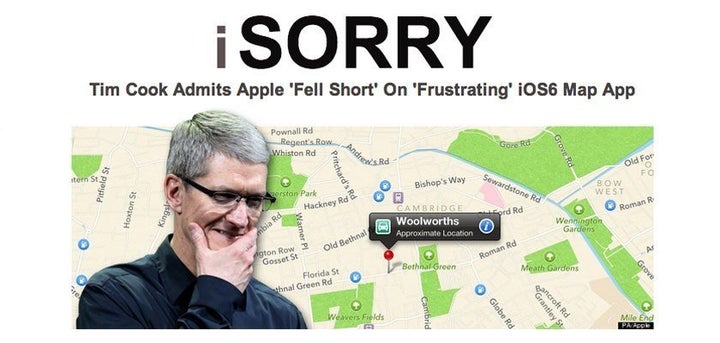
You're the chief executive and your company is mired in a major public outcry. Let's call it the "Map Flap" -- Hiccups in your mapping software have marred your newest product release, which was first heralded by a frenzy of excitement worldwide.
While you may not be Tim Cook leading Apple through an uproar, the old saying, "There but for the grace of God, go I," may come to mind.
Every executive can learn from Cook's corporate contrition. An effective executive apology can influence others, mitigate damage and maybe even bolster your credibility in the long run. The trick is to understand the art of the apology and follow the right steps. Here are three steps to generate goodwill through contrition:
- Own your mess. In today's Internet age, the knives come out quickly so get out in front with your mea culpa as soon as possible. You know your competitors are salivating to capitalize on your misstep. If you fail to act swiftly, you'll hand competitors an open invitation to take charge.
- Zero in on the hot button. Openly take responsibility for your customers' satisfaction. Focus specifically on what's bugging them the most or they'll be convinced that you're out of touch or insensitive. They should feel that you fully understand the impact your mistake has on their purchase -- and their life.
- State the solution. If there's a remedy to your transgression, share exactly how you're going to make it right. Stay out front until it's solved. This can prevent future arrows from being slung at you.
After a decade an an executive coach, I've learned that the key to a successful executive apology is to handle it as swiftly, sincerely and directly as possible.
But what if it's not a company flap? What if it's your own interpersonal error, such as a misunderstanding with someone on your leadership team or even your associates that requires an apology? The same three steps apply, but add these:
- Don't blame the victim. You'll sound pompous and insincere. Don't begin with "If I offended anybody..." That sounds like you're blaming a resentful person for being overly sensitive to remarks that you feel you obviously didn't intend as an affront. Instead, take responsibility. Say something like, "I offended you -- and I'm sorry."
- Don't inflict wounds. Ridiculous qualifying words like "No offense, but..." and "Don't take this personally, but..." are passive-aggressive. You're saying one thing, but you mean the opposite. What you're about to say is personal and yes, it's likely to offend. So instead of qualifying your contrition, be honest and get to the point kindly but decisively.
- Don't over-apologize for a small act. Dripping with contrition for a minor issue can damage your credibility. One sincere "I was wrong about _____ and I apologize..." can mend a small mistake. Think of this like antibiotics -- apologies become ineffective with misuse.
Let's face it -- we're all human. We're all prone to messing up from time to time. Hopefully your transgression won't be as public as Apple's. But if it is, you'll tackle it head-on with honesty and grace.
